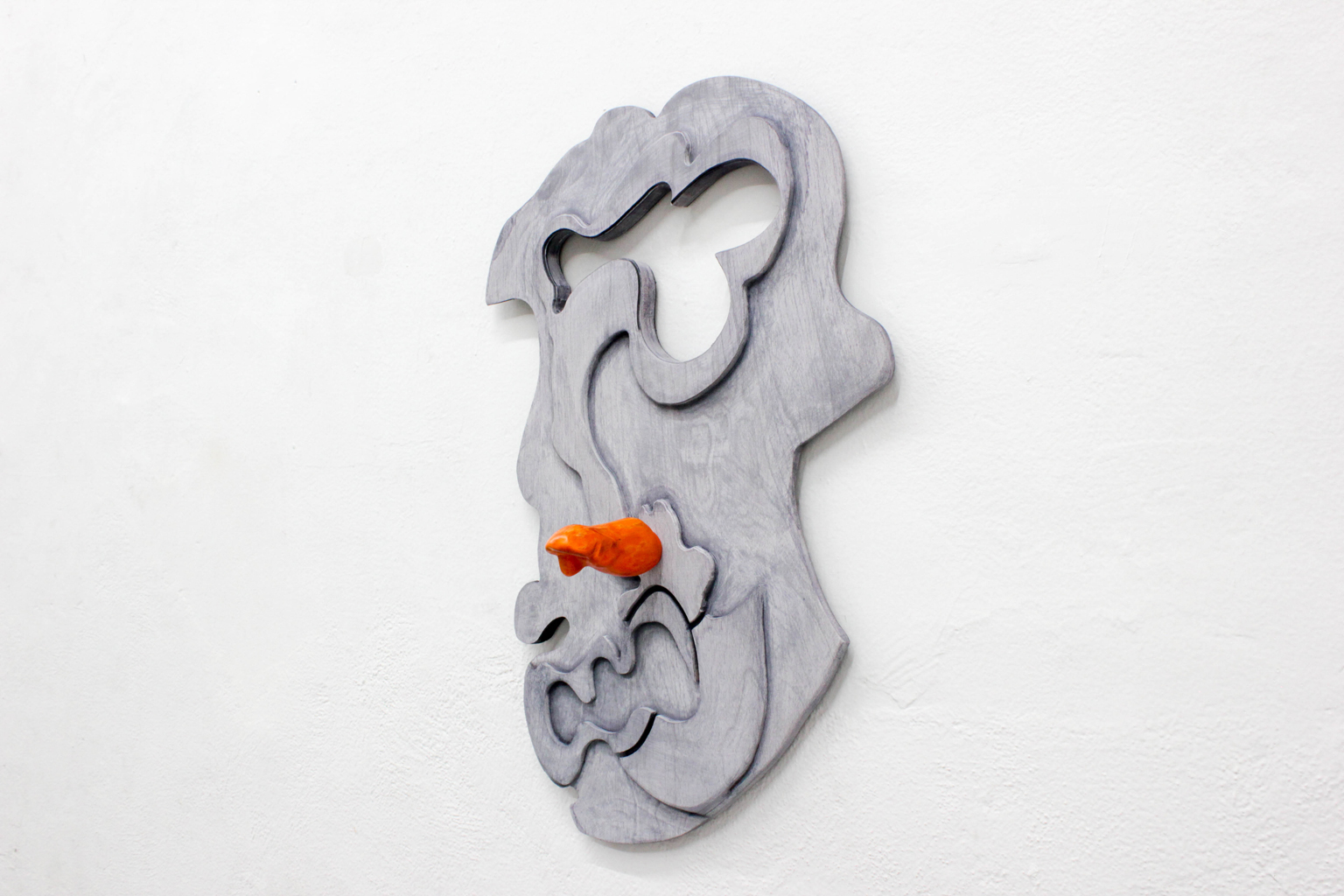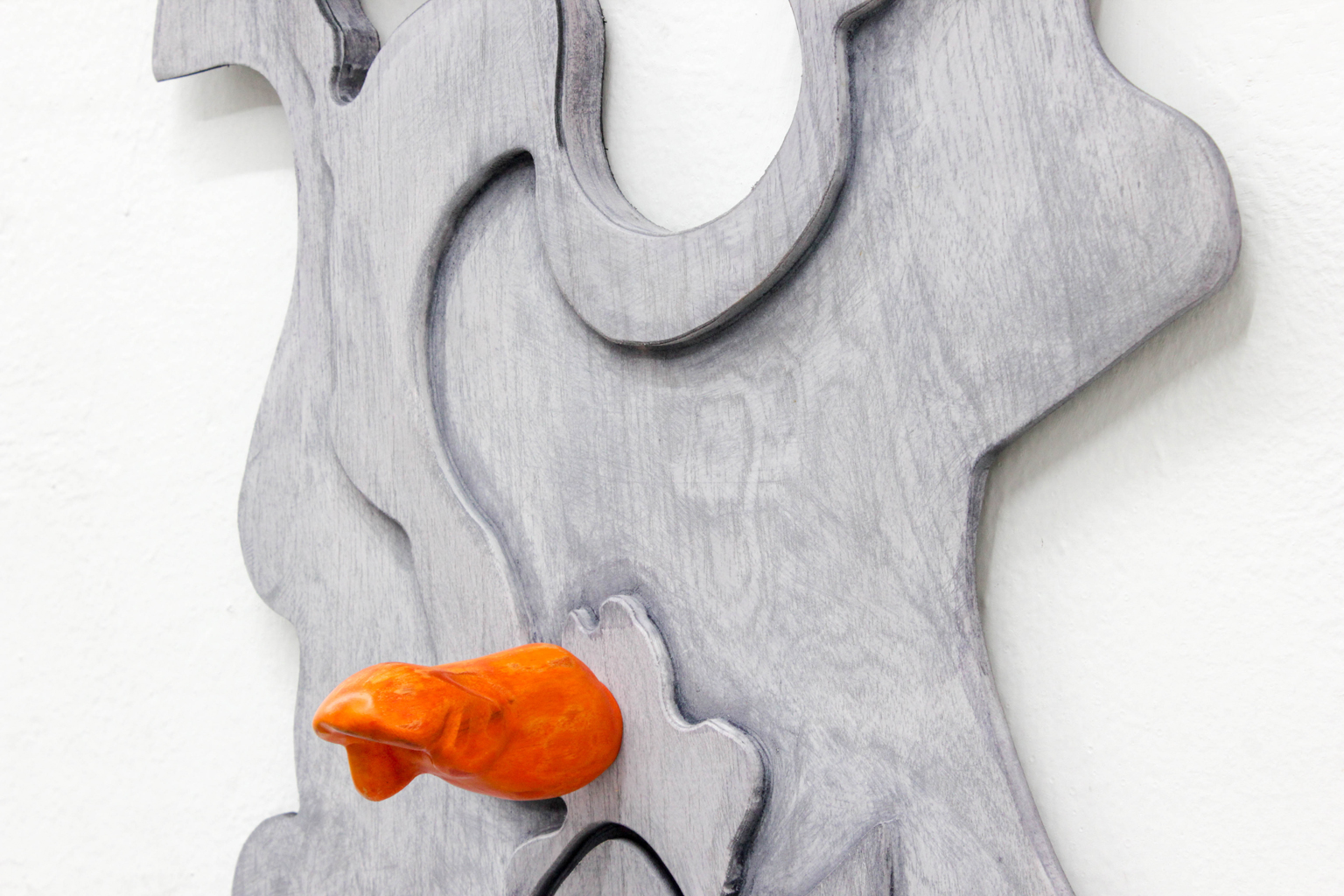Project preview at Salón ACME 2022, Mexico City. February 10th-13th, 2022
Untitled (Felipes III, Cárloses I, Gaznápiro), amalgamate in different ways the features of monarchs Charles V and II, Philip II, III and IV, who between 1500 and 1700 were in charge of New Spain. From the detailed study of court portraits made by Carreño de Miranda, Sánchez Coello, Titian, Van Orley, Lucas Cranach the Elder, Sofonisba Anguissola and Velázquez, the most prominent or similar features of these dignitaries have been combined through digital collage, pointing out anatomical ‘anomalies’ produced by the inbreeding of the Spanish Habsburgs that can be detected
in their jaws, foreheads or cheekbones. From these digital collages, cutting templates have been produced that allow the making of masks in cedar wood by means of carving with manual routers, which leave a sculptural imprint on the manual gesture. In this way, the resulting face is at the same time impersonal and interchangeable, describing any of these monarchs as an otherness. This emphasis on depicting the Habsburgs like grotesque creatures is somewhat analogous to the colonial descriptions made during the time of their reigns, which caricatured the conquered populations.
The pieces of Untitled (Gatekeeping III) series focus on rethinking the shape and meaning of the sceptre, which traditionally has been an insignia of power for the Spanish Habsburgs, present in most court paintings of the time. This artifact, which is at the same time a cane and a symbolic extension of the arm, has been reinterpreted by combining
it with the ‘digitus impudicus’ or ‘middle finger’, probably the oldest insulting gesture known. Thus the emblem of dynastic power becomes an openly offensive object, a sort of detachable billiard stick whose length changes depending on the dimensions of the offense that is intended to be achieved,
and also a sexualizing insinuation of power, where the scepter affords its use as the material extension of a phallus. The piece exists within an ambiguous material spectrum, since the obviousness of the sign is compensated by the sobriety and elegance of zapote tropical wood.
Through this material modification of a historical object, the pieces of Untitled (Gatekeeping) transfer the sobriety of the colonial imperial iconography within the vulgarity of the insult
and the vulnerability of sex, updating the meaning and legacy of these representations.
















